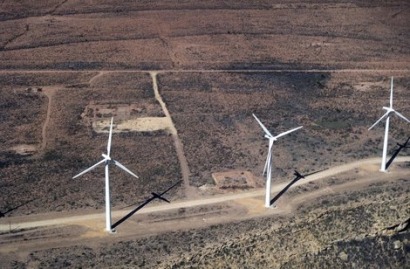
Wind power and solar PV are essential to meeting future energy needs while decarbonising the power sector, yet some critics believe that introduction of these technologies is not cost-effective and may even be destabilising. However, a landmark study released by the IEA has now addressed these concerns and dismissed the myths completely.
Deployment of wind and solar has expanded considerably in recent years and this trend will almost certainly continue for decades to come according to IEA scenarios. The new report has now shown that integrating high levels of renewable energy, representing 30 percent of annual electricity generation or more, is possible without incurring major additional cost in the long term. However, the level of costs depends on how flexible the power system is and what strategy is employed to ensure system flexibility over the long term.
The report shows that while some nations will find it difficult to transform their energy networks to suit renewable energy, for others it will be much easier.
“Integrating high shares of variable renewables is really about transforming our power systems” said IEA Executive Director Maria van der Hoeven as she launched The Power of Transformation - Wind, Sun and the Economics of Flexible Power Systems, the latest in a series of IEA reports examining challenges and opportunities facing the global renewable energy sector. “This new IEA analysis calls for a change of perspective. In the classical approach, variable renewables are added to an existing system without considering all available options for adapting it as a whole. This approach misses the point. Integration is not simply about adding wind and solar on top of ‘business as usual’. We need to transform the system as a whole to do this cost-effectively.”
At present, wind and solar PV account for just 3 percent of global electricity generation, although a few countries enjoy very high levels of renewable energy, in particular Italy, Germany, Ireland, Spain, Portugal and Denmark where wind and solar PV respectively represent from 10 to 30 percent of electricity generation (2012 figures). The IEA report has found that for any country, integrating the first 5-10 percent of ‘variable renewable energy’ (VRE) generation poses no technical or economic challenges at all, provided that three conditions are met: uncontrolled local “hot spots” of VRE deployment must be avoided, VRE must contribute to stabilising the grid when needed, and VRE forecasts must be used effectively.
These lower levels of integration are possible within existing power systems because the same flexible resources that those systems already use to cope with variability of demand can be put to work to help integrate variability from wind and solar. Such resources can be found in the form of flexible power plants, grid infrastructure, storage and demand-side response. Nevertheless, going beyond the first few percent to reach shares of more than 30 percent will require a transformation of the system.
This transformation has three main requirements: deploying variable renewables in a system-friendly way using state-of-the art technology, improving the day-to-day operation of power systems and markets, and finally investing in additional flexible resources. This means that governments with stable power systems face tough policy questions about how to handle the distributional effects, particularly if other power plants need to be retired before the end of their lifetimes. Meeting these challenges will only be possible through a collaborative effort by policy makers and the industry, yet these “surmountable challenges” are opportunities given the benefits renewables can bring for energy security and fighting dangerous climate change.
For additional information:
International Energy Agency (IEA)
The Power of Transformation - Wind, Sun and the Economics of Flexible Power Systems (on sale at the IEA bookshop.)

